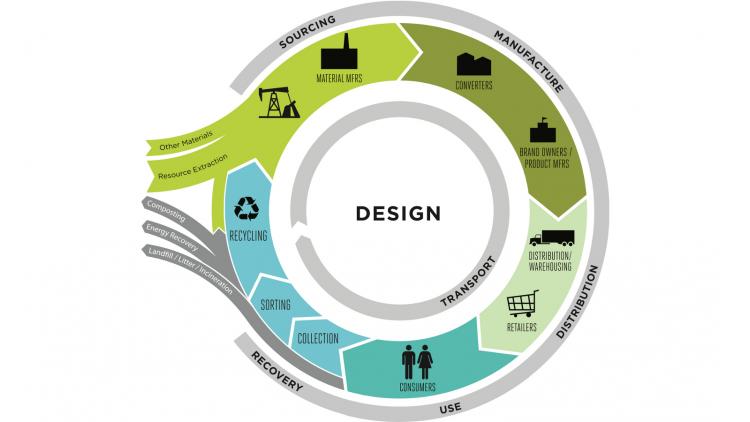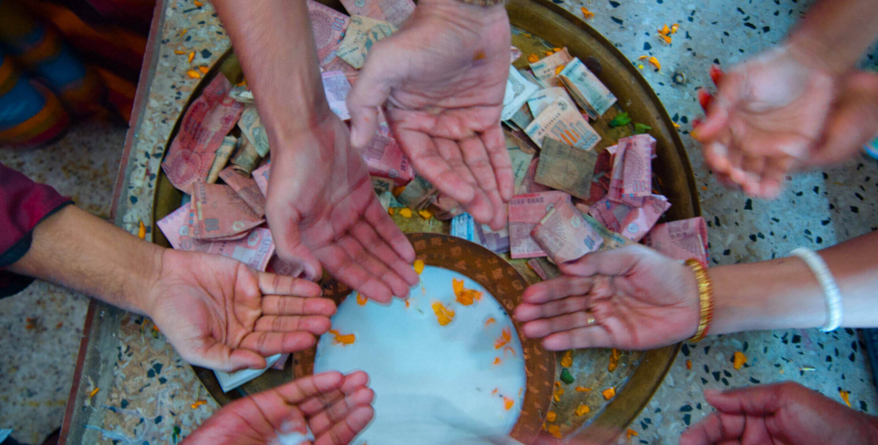
Something will mark 2017 forever: its climate disasters…From hurricanes to heat waves the world experienced a bit of everything. Every time we have a high-impact, catastrophic, extreme events occurring, people ask themselves, ‘Is this climate change?'”. Regardless of the different opinions the awareness that human-induced climate change is progressing is now part of mainstream consciousness. So what can be done? And how is the current economic model, based on continuous extraction of resources and escalating growth, contributing to this situation? Are there any other alternatives ?
According to some, we are indeed moving now, step by step, to a new economic system, which is more sustainable: the circular economy.
The circular economy challenges the traditional ethos of the linear economy (make, use, dispose) proposing that we keep resources in use for as long as possible, in order to get the maximum value from them whilst in use,. After that cycle, it is then possible to recover and regenerate products and materials at the end of each service life.
This new perspective moves beyond the extractive industrial model. The circular economy is thus restorative and regenerative by design. Relying on system-wide innovation, it aims to redefine products and services to design waste out, while minimising negative impacts. Looking forward to a transition to renewable energy sources, the circular model is focused on building economic, natural and social capital.
The Ellen MacArthur Foundation, is an UK organization looking at the circular economy. Established in 2010, its main aim is accelerating the transition to the circular economy. order to maximize its implementation into society. Recently, they published a report identifying the following four essential building blocks of a circular economy.
Block 1. Circular economy design
Companies need to build core competencies in circular design to facilitate product reuse, recycling and cascading. Circular product (and process) design requires advanced skills, information sets, and working methods. Areas important for economically successful circular design include: material selection, standardised components, designed-to-last products, design for easy end-of-life sorting, separation or reuse of products and materials, and design-for-manufacturing criteria that take into account possible useful applications of by-products and wastes.
To picture how this design can shape the economy landscape, we can look at the example of company Braiform, Brainform is a global leader in garment hanger reuse. This means that products are returned to reuse centres where they are sorted, repackaged and distributed back to garment-producing regions, preventing them from ending up in landfill.
Braiform is amongst the largest garment hanger suppliers in the world, handling billions of hangers each year. In the past, the company was a key player in the initial manufacture of these products, but fifteen years ago the decision was made to sell off all production facilities and commit to a dedicated re-use supply chain. Today, Braiform is the global leader in garment hanger re-use.

Block 2. New business models
The shift to a circular economy requires innovative business models that either replace existing ones or seize new opportunities. Companies with significant market share and capabilities along several vertical steps of the linear value chain could play a major role in circular economy innovation and driving circularity into the mainstream by leveraging their scale and vertical integration. While many new models, materials, and products will come from entrepreneurs, established brand and volume leaders can also play a critical role. Profitable circular economy business models and initiatives will inspire other players and will be copied and expanded geographically.
The ones who tend to revolutionise business models, are though smaller companies, driven by entrepreneurs with a new set of values. That is the case of Bundles, a company from The Netherlands in 2014, which introduced a completely new business system. Bundle offers clean clothes on a pay-per-wash basis. Applying Internet of Things technology, it enables product monitoring, while maintenance and refurbishment of higher quality machines preserves the product integrity for multiple cycles.
Bundles aims to go beyond generic advice, to using Internet of Things data to enable customised performance tweaks and continuous improvement; optimising machine load, cycle duration, temperature and detergent use, all variables that can waste money for the user and damage appliances. In this way, not only do customers get household jobs done in an easy and affordable manner, but there are wider economic benefits. In addition to energy savings, the ability to monitor, maintain, repair and refurbish the higher quality machine preserves product integrity for multiple cycles, breaking from the current resource-intensive linear model.
Block 3. Reverse cycles
Block 3 says that new and additional skills are needed for cascades and the final return of materials to the soil or back into the industrial production system. This includes delivery chain logistics, sorting, warehousing, risk management, power generation, and even molecular biology and polymer chemistry. With cost-efficient, better-quality collection and treatment systems, and effective segmentation of end-of-life products, the leakage of materials out of the system will decrease, supporting the economics of circular design.
One of the best examples of how to reuse and recycle left-for-dead devices is Mazuma Mobile.
Set in the UK, Mazuma Mobile is an online mobile phone reuse and recycling service allowing consumers to unlock the cash value of their mobile phones, by offering same day payments. Collected handsets are refurbished by an external partner where necessary and then sold to partners in emerging markets, insurance dealers and retailers.
Of the 50,000 to 150,000 phones received every month, the large majority can be reused, provided part of them go through refurbishing . The handsets are then sold to approved partners in China and Africa, with whom they keep long-term relationships. These second-hand phones are also sold within the UK to phone retailers and to insurance companies. In 2011, Mazuma Mobile became the first company of its type to pay out £100 million to its customers and was awarded by ‘The Best Recycling Service Provider’ in 2012 and 2013.
Block 4. Enablers and favourable system conditions
Block 4 focus on policy making and education. For widespread reuse of materials and higher resource productivity to become commonplace, market mechanisms need to play a dominant role, but they will benefit from the support of policy makers, educational institutions and popular opinion leaders. Examples of these enablers include:
-
Collaboration
-
Rethinking incentives
-
Providing a suitable set of international environmental rules
-
Leading by example and driving up scale fast
-
Access to financing
Indeed, one of the companies that have taken advantage of some good community iniciatives is Kalundborg Symbiosis.At Kalundborg Symbiosis, public and private companies buy and sell waste from each other in a closed cycle of industrial production. Driven by increased costs of materials and energy for businesses, exchanges between companies are initially assessed on the basis of economic gains in saving of resources or money.
Industrial symbiosis can be defined as the exchange of materials or waste streams between companies, so that one company’s waste becomes another company’s raw materials. At Kalundborg Symbiosis, public and private companies buy and sell waste from each other in a closed cycle of industrial production. A variety of by products are traded, such as steam, ash, gas, heat, sludge, and others that can be physically transported from one company to another.
By implement these 4 principles, companies can fast track the evolution to a circular economy which aims to rebuild capital, whether this is financial, manufactured, human, social or natural. This certainly will contribute to a more sustainable economic system that can be of benefit to all.

Maria Fonseca is the Editor and Infographic Artist for IntelligentHQ. She is also a thought leader writing about social innovation, sharing economy, social business, and the commons. Aside her work for IntelligentHQ, Maria Fonseca is a visual artist and filmmaker that has exhibited widely in international events such as Manifesta 5, Sao Paulo Biennial, Photo Espana, Moderna Museet in Stockholm, Joshibi University and many others. She concluded her PhD on essayistic filmmaking , taken at University of Westminster in London and is preparing her post doc that will explore the links between creativity and the sharing economy.































